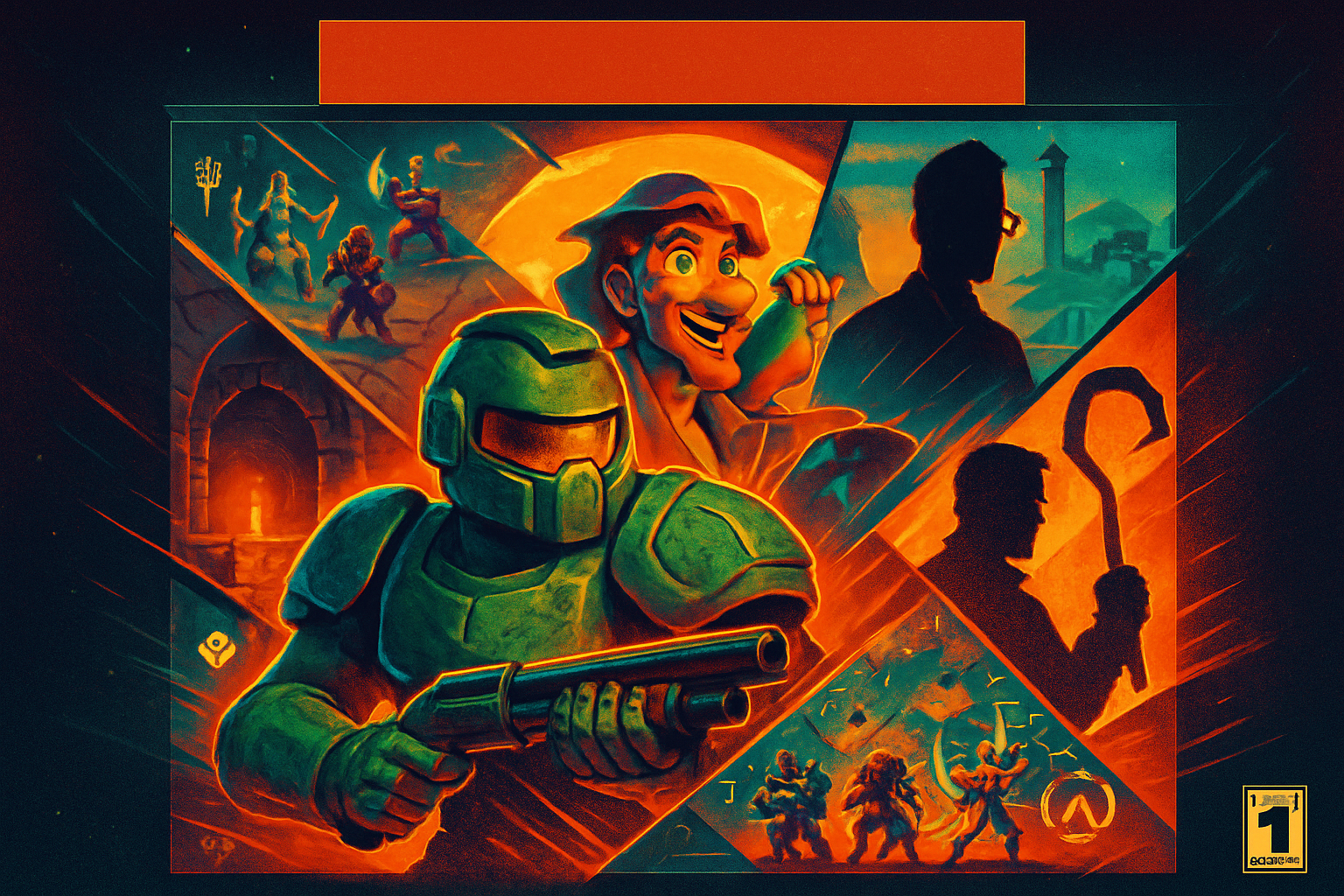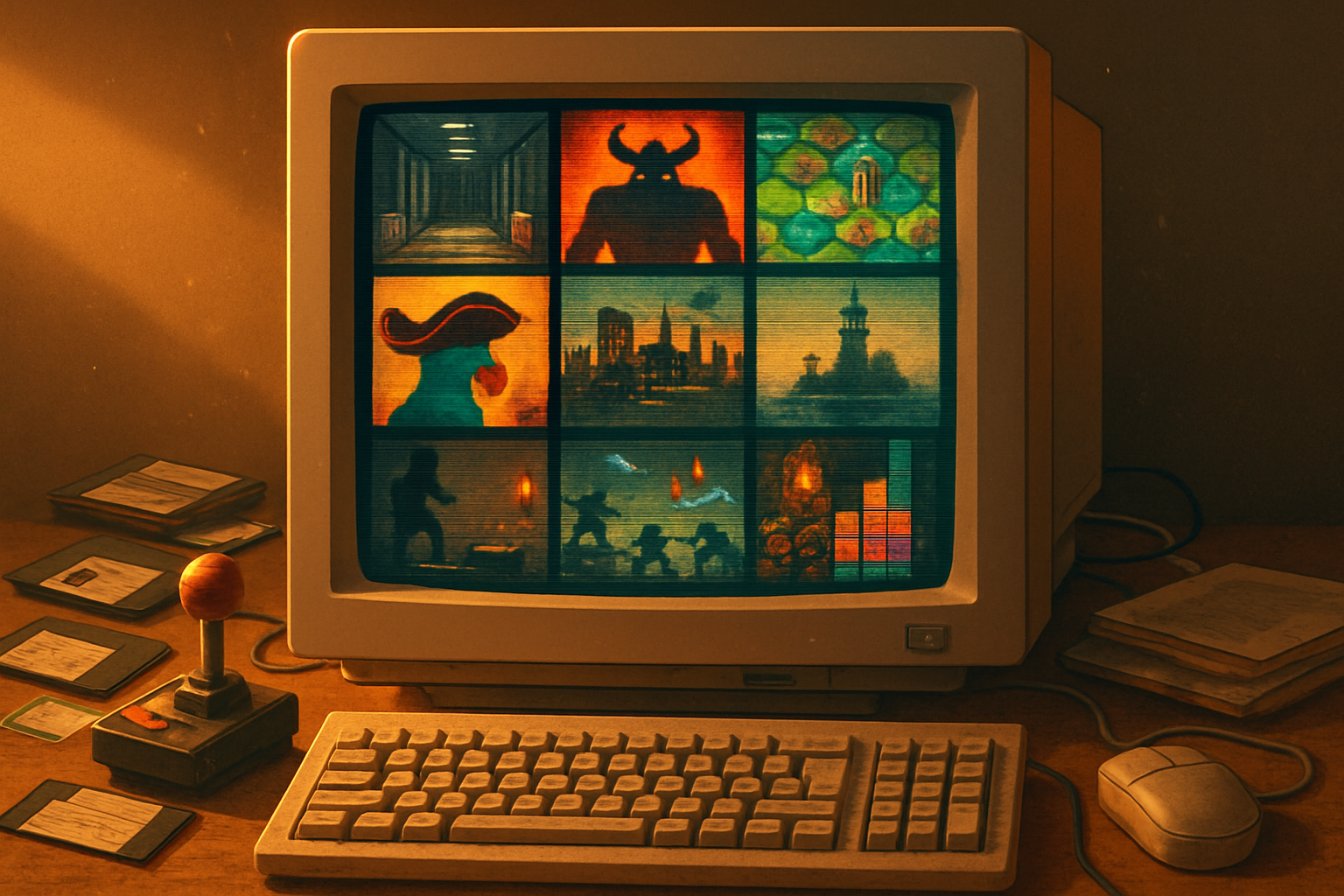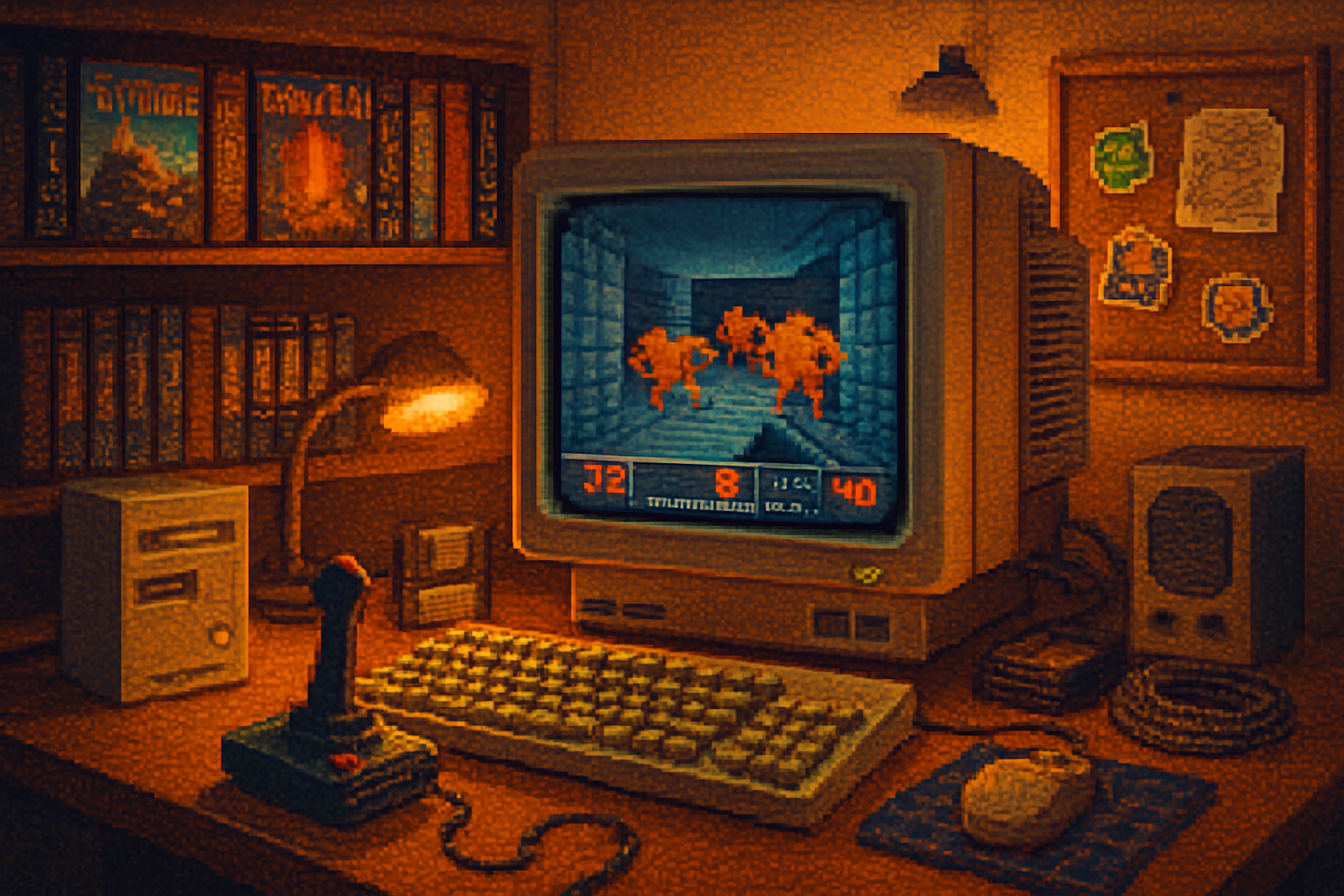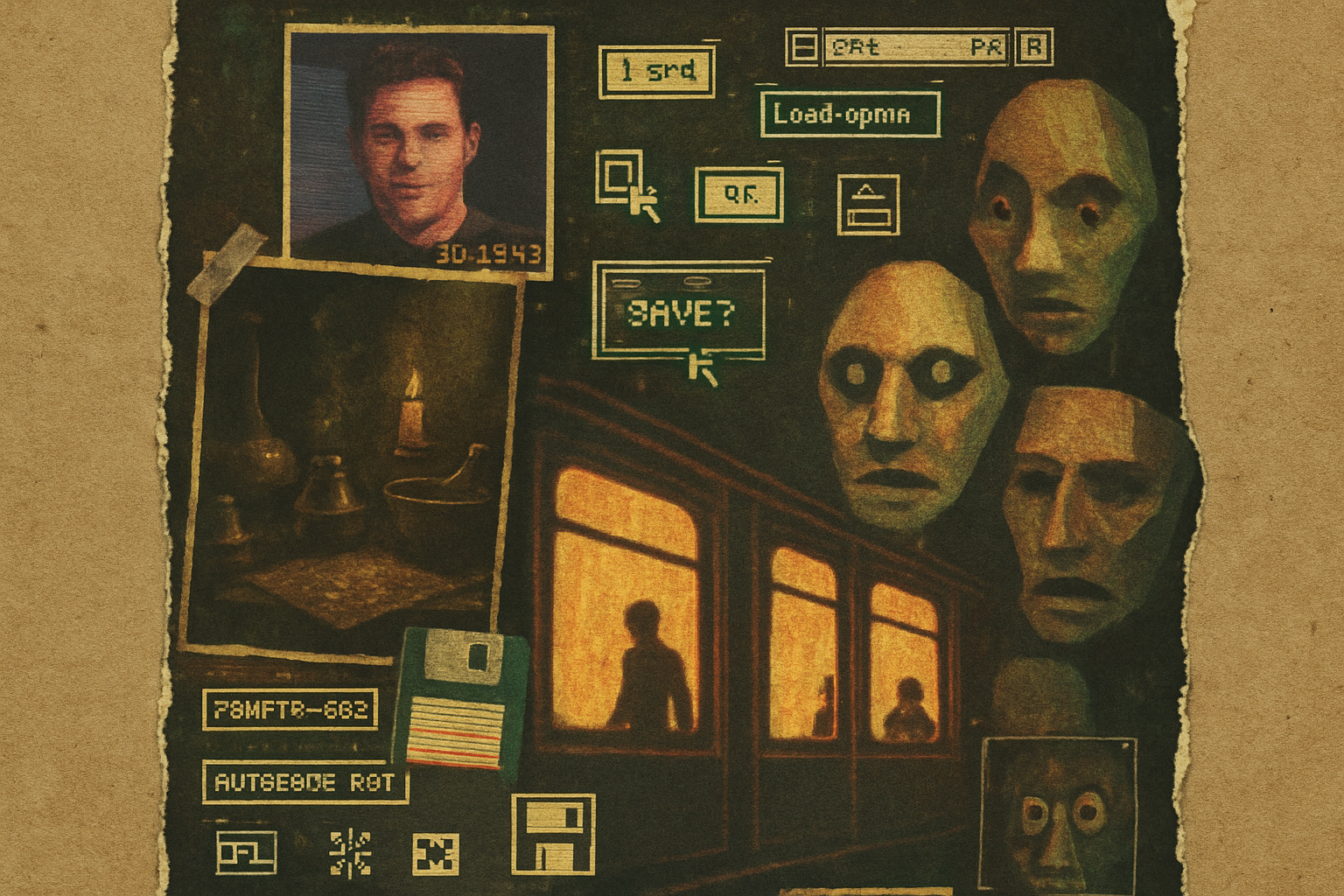· retrogaming · 6 min read
The Ultimate Retro PC Game Showdown: Which Classics Stand the Test of Time?
A head-to-head comparison of eight beloved retro PC games - Doom, Half‑Life, Baldur's Gate, Diablo, The Secret of Monkey Island, Myst, Civilization, and StarCraft - judged on graphics (for their era), storyline, and gameplay. Which titles still feel brilliant, and which are nostalgic relics?

Introduction
The term “retro PC game” covers decades, but some titles rise above the noise: they shaped genres, influenced designers, and still feel compelling today. In this showdown we pit eight classics against one another across three axes - graphics (judged both by technical achievement and timelessness), storyline, and gameplay - to determine which titles genuinely deserve the crown of “best.” We’ll score each matchup and explain why each game still matters.
Methodology: fair, era-aware scoring
- Graphics (0–10) - Not “pixel count” alone, but technical innovation for the time and whether the visual design still reads well today.
- Storyline (0–10) - Narrative depth, character writing, how story integrates with design, and long-term emotional impact.
- Gameplay (0–10) - Mechanics, balance, polish, replayability, and how fresh the experience feels now.
Scores are intentionally era-aware: a 1993 game with a bold, coherent aesthetic can beat a 1998 game that used more polygons but left no lasting visual identity.
The contenders and sources
- Doom (1993) - https://en.wikipedia.org/wiki/Doom_(1993_video_game)
- Half‑Life (1998) - https://en.wikipedia.org/wiki/Half-Life
- Baldur’s Gate (1998) - https://en.wikipedia.org/wiki/Baldur%27s_Gate_(video_game)
- Diablo (1996) - https://en.wikipedia.org/wiki/Diablo_(1996_video_game)
- The Secret of Monkey Island (1990) - https://en.wikipedia.org/wiki/The_Secret_of_Monkey_Island
- Myst (1993) - https://en.wikipedia.org/wiki/Myst
- Civilization (1991) - https://en.wikipedia.org/wiki/Civilization_(1991_video_game)
- StarCraft (1998) - https://en.wikipedia.org/wiki/StarCraft
Round 1 - First‑Person Shooters: Doom vs. Half‑Life
Doom (1993)
- Graphics - 7/10 - Sprite-based, limited palette, but revolutionary lighting and level design for its time.
- Storyline - 4/10 - Minimal narrative; the setting is evocative, but story is background fuel.
- Gameplay - 10/10 - Fast, precise, endlessly moddable; the moment-to-moment gameplay defined early FPS design.
- Total - 21/30
Half‑Life (1998)
- Graphics - 8/10 - Polygons and realistic environments raised immersion; a leap over mid-90s shooters.
- Storyline - 10/10 - Integrated narrative, scripted sequences, and a believable protagonist (Gordon Freeman) made the story matter.
- Gameplay - 9/10 - Intelligent level design and pacing, with varied combat and physics; still influential.
- Total - 27/30
Verdict: Half‑Life wins. Doom invented the raw thrill of FPS combat, but Half‑Life married that combat to pacing and storytelling in a way that shaped modern narrative shooters.
Round 2 - CRPGs / Action RPGs: Baldur’s Gate vs. Diablo
Baldur’s Gate (1998)
- Graphics - 7/10 - Isometric 2D art with detailed backgrounds; not flashy, but evocative.
- Storyline - 9/10 - Party-based writing, memorable NPCs, and branching choices rooted in D&D lore.
- Gameplay - 8/10 - Deep mechanics and party customization; complexity is a double-edged sword for newcomers.
- Total - 24/30
Diablo (1996)
- Graphics - 6/10 - Gritty 2D sprites and dark palette; functional and atmospheric but not painterly.
- Storyline - 5/10 - Simple, archetypal “descend and kill” tale, but atmosphere carries it.
- Gameplay - 10/10 - Tight loot loop, addictively satisfying combat, and procedural dungeons; the action-RPG loop was perfected.
- Total - 21/30
Verdict: Baldur’s Gate takes the nod for story depth and RPG fidelity, but Diablo’s gameplay loop influences almost every looter-action game that followed.
Round 3 - Graphic Adventure vs. Puzzle Adventure: Monkey Island vs. Myst
The Secret of Monkey Island (1990)
- Graphics - 7/10 - Cartoonish pixel art with strong character design and timeless humor.
- Storyline - 9/10 - Sharp writing, memorable jokes, and characters that stick with you.
- Gameplay - 7/10 - Puzzle-based interaction; some solutions are obtuse by modern standards, but the adventure flow is delightful.
- Total - 23/30
Myst (1993)
- Graphics - 8/10 - Pre-rendered environments that felt photorealistic in 1993; art direction created curiosity and mood.
- Storyline - 7/10 - Minimalistic but emotionally resonant; discovery is the narrative engine.
- Gameplay - 7/10 - Exploration-puzzle focus; slow but rewarding for players who love atmosphere and thought puzzles.
- Total - 22/30
Verdict: Monkey Island wins narrowly for writing and character - humor ages better than photorealism. Myst’s sensory world is brilliant, but Monkey Island’s personality endures.
Round 4 - Strategy & Simulation: Civilization vs. StarCraft
Civilization (1991)
- Graphics - 6/10 - Simple tiles and icons, but a functional UI that let players think in centuries.
- Storyline - 6/10 - Emergent narrative: stories created by players’ choices rather than scripted plot.
- Gameplay - 10/10 - Deep strategy loop, memorable tech tree, and infinite replayability.
- Total - 22/30
StarCraft (1998)
- Graphics - 8/10 - Clear spritework and iconic unit design; presentation served balance and readability for competitive play.
- Storyline - 8/10 - Strong campaign with memorable cinematics and distinct factions.
- Gameplay - 10/10 - Perfected RTS balance and pacing; the multiplayer meta here defined esports.
- Total - 26/30
Verdict: StarCraft wins for combining tight design, competitive balance, and memorable faction identity; Civilization wins in the “sandbox, make-your-own-epic” sense.
Synthesis: What matters most today?
- Graphics - Age gracefully when they have a strong, coherent aesthetic. Doom’s gritty sprites and Myst’s photoreal scenes both work differently; what matters is consistency and design intent.
- Storyline - Integrated stories that use gameplay to tell (Half‑Life) or create emergent stories through systems (Civilization) last the longest. Purely expository or minimal plots can still be charming (e.g., Monkey Island), but they need personality.
- Gameplay - The single strongest predictor of longevity. Tight mechanics, satisfying feedback, and systems that reward mastery keep players returning decades later (see Doom, Diablo, StarCraft).
Top performers in each category
- Graphics (timeless design + era achievement) - Half‑Life, Myst, StarCraft
- Storyline (narrative integration and memorability) - Half‑Life, Baldur’s Gate, Monkey Island
- Gameplay (polish, addiction, design lessons carried forward) - Doom, Diablo, StarCraft
The champion: which classic truly stands the test of time?
If we aggregate impact, scores, and legacy, one title stands out: Half‑Life. It combines technical polish for its time, an emergent approach to scripted narrative, and gameplay that still informs modern shooters. But the real truth is more nuanced: “best” depends on what you value.
- If you prize raw, sculpted gameplay - Doom. Its DNA is in every twitch shooter.
- If you prize emergent, player-crafted epics - Civilization.
- If you prize narrative and cinematic integration - Half‑Life.
- If you prize mood, atmosphere, and contemplative puzzles - Myst.
- If you prize writing and comedic voice - The Secret of Monkey Island.
- If you prize addictive progression and loot loops - Diablo.
- If you prize multiplayer balance and competitive legacy - StarCraft.
- If you prize party-based RPG depth with robust storytelling - Baldur’s Gate.
Why these games still matter
- They taught designers how to marry systems and player expectation. Half‑Life taught pacing, Diablo taught reward loops, and Civilization taught systems-driven narrative.
- They established genres and conventions. Doom made the FPS mainstream; StarCraft made the modern RTS template; Diablo created the modern action-RPG archetype.
- They still inspire - remasters, spiritual successors, and independent games repeatedly borrow from these designs.
Closing: the value of playing retro
Playing retro games isn’t only nostalgia - it’s schooling. Designers and players alike can learn crispness of design, the power of limitation, and how a single brilliant idea can echo for decades. There will never be a single “best” retro PC game because games solve different problems and speak to different players. But if you want one recommendation to show why PC gaming matters, play Half‑Life - then revisit Doom, Civilization, and Monkey Island to see how different visions of “fun” shaped an industry.
Further reading and sources
- Doom (1993) - https://en.wikipedia.org/wiki/Doom_(1993_video_game)
- Half‑Life (1998) - https://en.wikipedia.org/wiki/Half-Life
- Baldur’s Gate - https://en.wikipedia.org/wiki/Baldur%27s_Gate_(video_game)
- Diablo (1996) - https://en.wikipedia.org/wiki/Diablo_(1996_video_game)
- The Secret of Monkey Island - https://en.wikipedia.org/wiki/The_Secret_of_Monkey_Island
- Myst - https://en.wikipedia.org/wiki/Myst
- Civilization (1991) - https://en.wikipedia.org/wiki/Civilization_(1991_video_game)
- StarCraft - https://en.wikipedia.org/wiki/StarCraft
Which retro PC game would you want me to break down next - complete playthroughs, remaster comparison, or design lessons from a single title?



